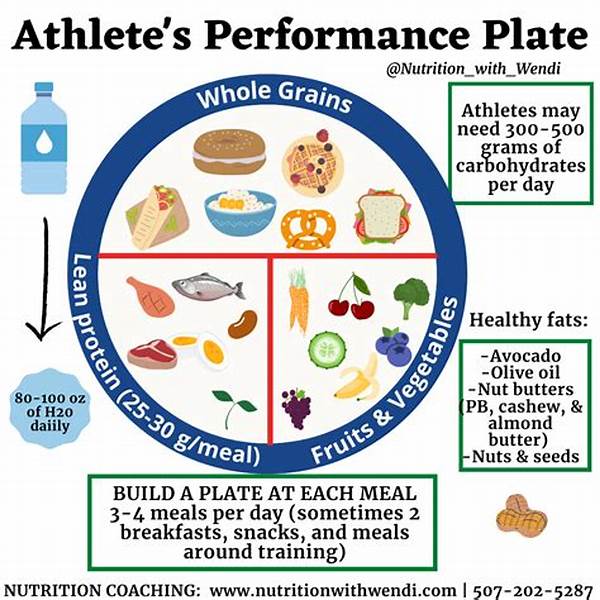Nutrition Guide For Track And Field Athletes

Welcome to the ultimate nutrition guide for track and field athletes! If you’re a sprinter, jumper, thrower, or middle-distance runner, you’ve landed in the right place. Whether you’re aiming for a top podium finish or your personal best, the food you eat is crucial. The energy, strength, and endurance needed for rigorous training and competition have a direct connection to your diet. But don’t worry—this isn’t your typical, boring nutrition manual. This guide is packed with practical tips, stories, and a little dash of humor to give you the inside track on optimal performance.
Read More : The Importance Of Warming Up Before Speed exercise
Have you ever wondered why some athletes seem to have that extra edge, whether it’s at the starting line or while taking that giant leap into the sandpit? The secret is not just in the hard work on the track but also in their choice of fuel. So, how do you become one of those supercharged athletes? Read on to decode the secrets of sports nutrition designed specifically for track and field warriors like you. Oh, and spoiler alert: it involves more than just stuffing your face with pasta the night before a competition.
Key Components of Nutrition for Track and Field Athletes
Understanding Your Nutritional Needs
In track and field, nutrition isn’t a one-size-fits-all solution. Understanding the unique requirements of different events can make a substantial difference in your performance. For instance, a sprinter’s diet would vary significantly from a long-distance runner’s. While both need carbohydrates for energy, the proportion and timing might differ. Short but intense activities need immediate energy reserves, while endurance events require sustained energy.
Carbohydrates are a significant energy reserve, but athletes shouldn’t ignore the importance of proteins and fats. Proteins are crucial for muscle repair and recovery, and healthy fats are important for hormonal balance. Moreover, hydration cannot be overstated. Water and electrolytes need replenishment, especially during strenuous training sessions under the sun.
Meal Timing and Frequency
The timing of your meals can dramatically affect how you perform. Eating the right nutrients at the right time can optimize energy levels and speed up recovery. Small, frequent meals packed with nutrients can prevent energy slumps and keep metabolism ticking.
Breakfast is non-negotiable; it sets the energy tone for the day. Before activity, a small, easily digestible meal or snack high in carbs can provide the necessary fuel. Post-training recovery should ideally happen within 30 minutes after exercise. A perfect mix of carbs to restore glycogen and protein for muscle repair is highly recommended.
Tailored Nutrition Programs
Customizing Diets for Event-Specific Needs
Not every athlete in the track and field arena is created equal, at least when it comes to nutritional needs. Sprinters require explosive power, meaning a diet rich in fast-absorbing carbohydrates and protein is essential. On the other hand, long and middle-distance runners thrive on sustained energy levels, benefiting from a diet rich in complex carbs combined with lean proteins.
Throwers, who prioritize strength and power, will benefit from a diet rich in proteins and good fats, accompanied by a caloric intake that supports muscle mass. Jumpers like high jumpers or pole vaulters require a balance not only in power but also agility, which comes from a balanced diet of carbs, proteins, and fats. Consulting with sports dietitians can help craft these customized diet plans.
Read More : Jd Sports Presents Retro-style Casual Shoes With Modern Designs
Supplements: The Good, The Bad, and The Necessary
Supplements can be a valuable addition, yet are often misunderstood and misused. Multivitamins, omega-3 fatty acids, and whey protein can be viable options if athletes struggle to meet their nutritional demands through food alone. However, they should not replace whole foods and should be consumed with the guidance of a healthcare professional.
Practical Tips and Tricks
Conclusion: Mastering Nutrition for Track and Field Success
Fueling Your Success
Nailing down the perfect nutrition guide for track and field athletes demands attention to detail and a test-and-learn approach. Consider experimenting with different nutritional strategies and tracking their effects on performance. Keep in mind; customization is crucial because what works for one might not suit another.
Crafting a Winning Diet
Creating your own personalized nutrition plan is not only a pathway to improved performance but also contributes to overall well-being and longevity in your sports career. Armed with this knowledge, you’re now equipped to tweak your dietary habits for the better. Remember: every bite you take is either toward or away from that gold medal.
Continuous Improvement
So, lace up those sneakers, and don’t underestimate the power of a well-thought-out eating plan. After all, your quest for athletic excellence deserves nothing less than the best. Happy eating, happy training, and may your plate be as balanced as your stride on the track!
Embrace the nutrition guide for track and field athletes—not as a rulebook but as a series of steps that will lead you to the peak of performance. Your potential is limitless; fuel it wisely!



